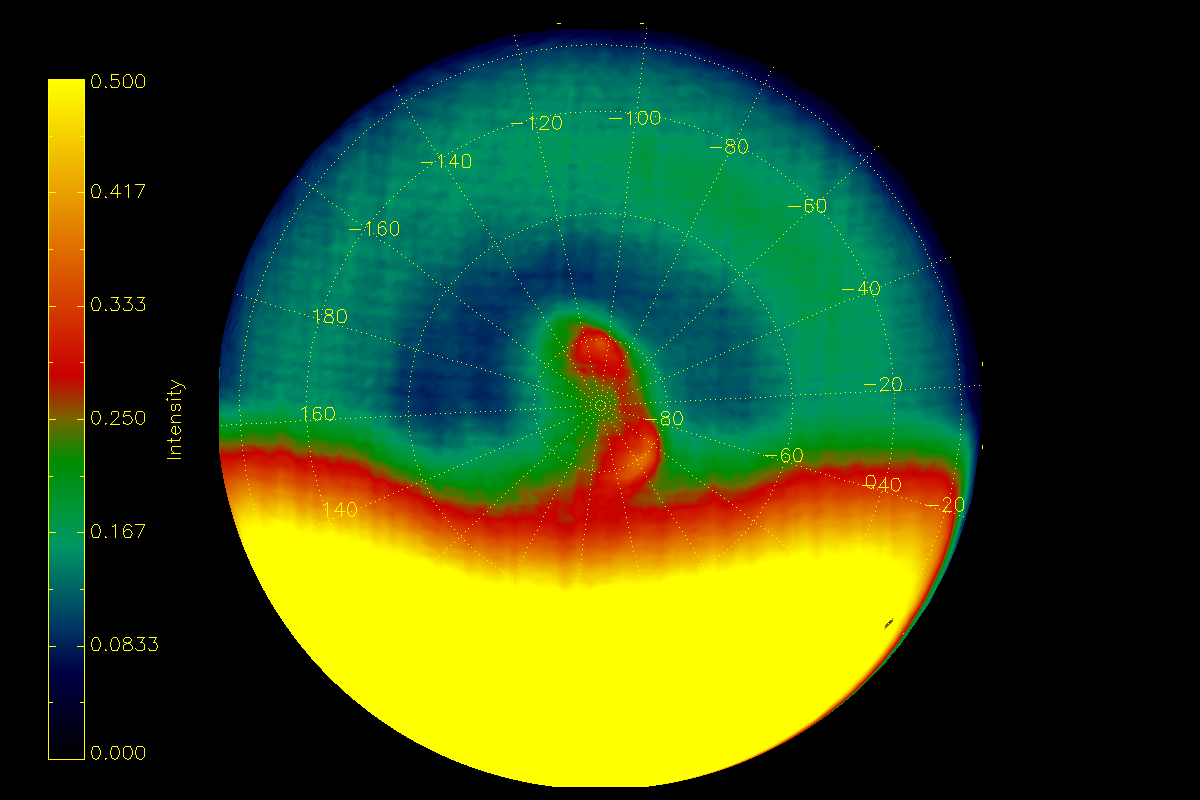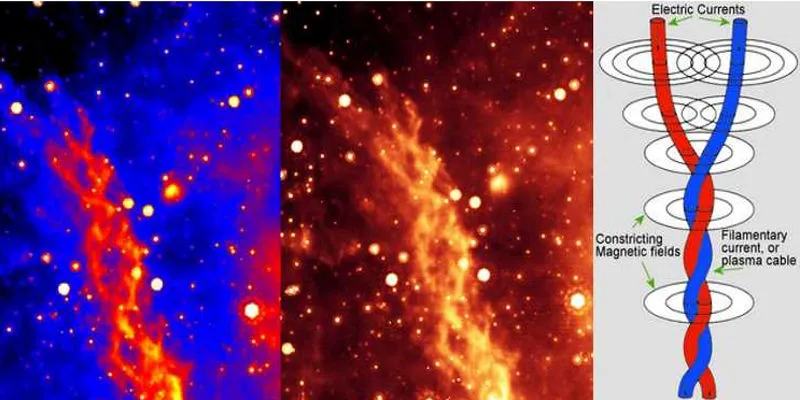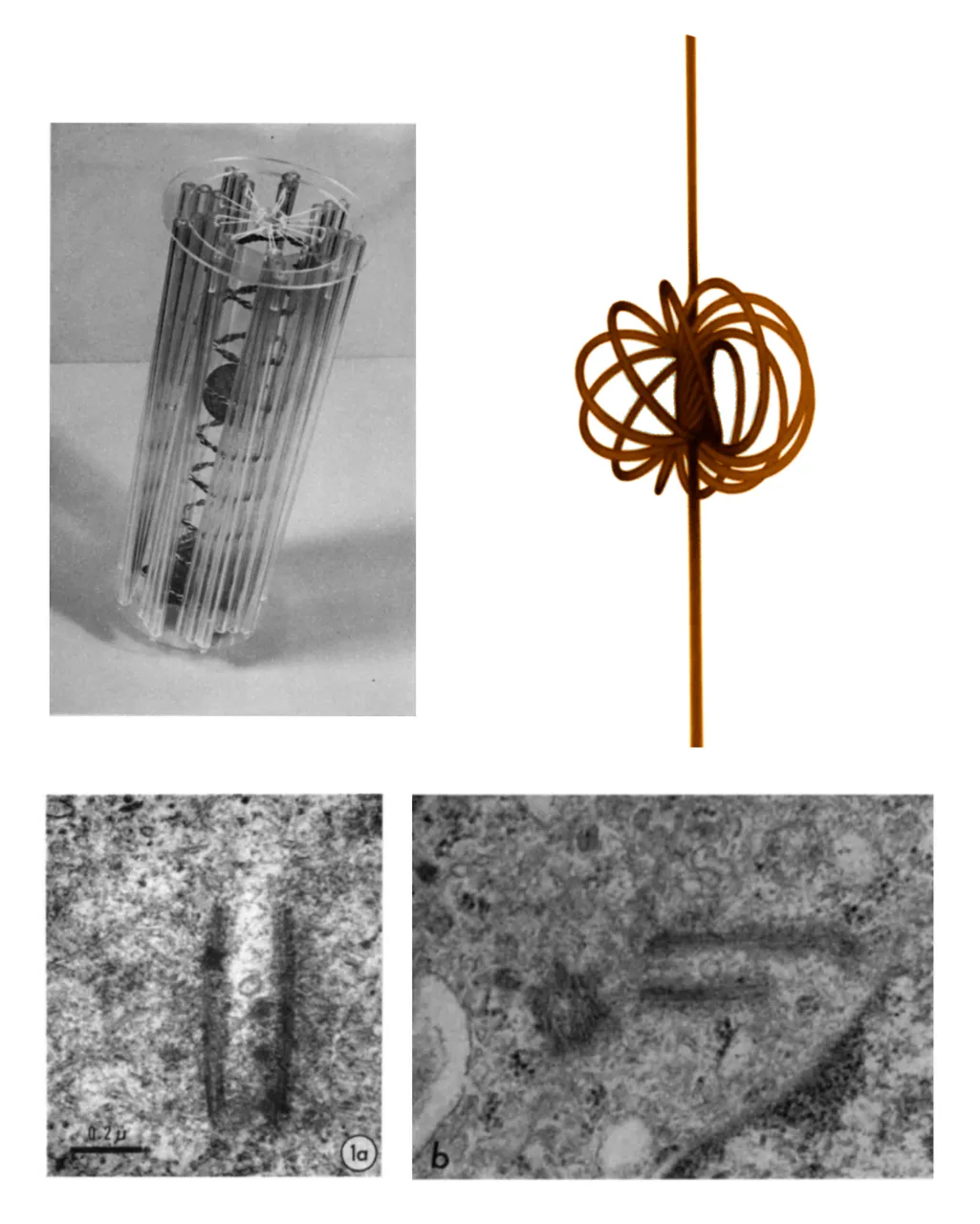I like the idea of a central plasmoid in planets because it seems like a good model for why planets grow/shrink, the plasmoid core repels the crust. It would also affect the electric charge of the crust, and gravity (an electric phenomena) from that, accounting for the loss of large animals over the past 200 million years that parallels the radial expansion. Also, seems like it would form a toroidal magnetic field. And, seems like if Birkeland currents are entering through holes in the atmosphere on the poles (clearly seen in infrared by Venus Express on the south pole in 2006, the image to the right below, first discovered by NASA's Pioneer Venus in 1978, on the north pole), they might as well continue through the crust.

The rotation of the Birkeland filaments (esa.in) does not necessarily contradict paired holes through the crust, similar to that seen in the polar spiral on Mars north pole, the spiralling pairs could be locked in place with regards to the crust, path of least resistance, and what is seen in these infrared images from Venus Express could be spiralling motion of the paired Birkeland filaments after they exit/enter the crust.


This is exactly what is seen in electron photographs of the centriole, an "inner helix" (Stubblefield & Brinkley, 1967), a current with paired filaments, the exact same type of current that enter Venus poles and that was observed first by NASA's Pioneer Venus in 1978 on the north pole of Venus and recorded multiple times since, in infrared by Venus Express on the south pole of Venus in 2006 .

Synapses
Hurrell, Stephen. (2011). Ancient Life's Gravity and its Implications for the Expanding Earth.
Maxlow, J. (2014). On the origin of continents and oceans. Terrella Press.
